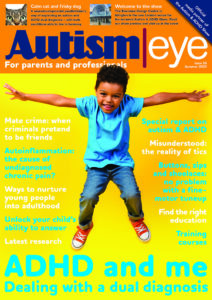There is mounting concern about the number of children with autism being given drugs, dubbed by some autism advocates as chemical restraint, as research shows that more than half are being given one or more psychotropic medications.
 Statistics released by the US-based Institute of Mental Health is raising worries about over-medication and an over-reliance on drugs, as opposed to improving communication and educational interventions to deal with behaviour challenges.
Statistics released by the US-based Institute of Mental Health is raising worries about over-medication and an over-reliance on drugs, as opposed to improving communication and educational interventions to deal with behaviour challenges.
Despite autism cases running at one in 88 children in the US, there are no medications available to treat the core symptoms of ASD, such as social communication issues and repetitive behaviours. On the other hand, an increasing number of children are being given psychotropic drugs, which are medications used to treat a mental disorder.
According to the Institute, half of all school-aged children with autism in the US are using at least one psychotropic medication. These drugs include stimulants to reduce hyperactive behaviour, mood-stabilizers for anxiety and depression, and antipsychotics to reduce aggression.
According to the Institute’s study, almost 33 per cent of these children used stimulant medications, 25 per cent used anti-anxiety or mood-stabilizing medications, and 20 per cent used anti-depressants.
Meanwhile, the UK’s children’s minister, Sarah Teather, has announced a programme to improve the mental health of children and young people.
Called BOND (Better Outcomes, New Delivery), the programme aims to ensure that families receive early intervention support from mental health services.
An estimated 850,000 children and young people in England are reported to suffer from a diagnosable mental health problem, equivalent to three children in every classroom.
According to Teather, schools – often the source of bullying for young people with autism – have an important part to play in fostering their students’ emotional wellbeing. The minister said it is “vital that schools feel confident to play their part” in pastoral support and early intervention activities.
Published: 3 July 2012















